Muy pocos gestos son universalmente entendidos e interpretados. Lo que es totalmente aceptable en una cultura puede ser maleducado, incluso obsceno, en otras.
Veamos unos ejemplos:
(Very few gestures are universally understood and interpreted. What is perfectly acceptable in a culture may be rude, or even obscene, in others. Let's see some examples:)

Pulgar levantado.
En Estados Unidos y la mayoría de los países europeos significa "Perfecto", sin embargoen muchos países de Latinoamérica, África occidental, Grecia, Rusia, Cerdeña y el sur de Italia, así como en Oriente Medio, se interpreta como "siéntate aquí y da vueltas", uninsulto muy grave.
(Thumbs-Up:In the Unites States and most of European countries, the gesture means "good going!" But in Latin America, West Africa, Greece, Russia, Sardinia and the south of Italy, as well as in the Middle East, it means "sit on it and swivel", a very serious insult.)
Llamar con un dedo.
En Estados Unidos sólo significa "Ven aquí" pero en la mayoría de las culturas se considera insultante llamar a alguien de ese modo: no sólo en Oriente Medio, Extremo Oriente, España, Portugal, Latinoamérica, Japón, Indonesia y sobre todo en Filipinas donde se utiliza para llamar a los perros y a las prostitutas y el gesto hasta está castigado con detención.
Lo mejor para llamar a alguien con señas es utilizar la mano con la palma hacia abajo moviendo los dedos o la manoentera.
(Beckon with index finger: In the U.S. this means "Come here" but to call someone this way is insulting in many culture: not only in the Middle or Far East; Spain, Portugal, Latin America, Japan, Indonesia and above all in the Philippines where it is used for calling dogs and prostitutes and this gesture can even be punished by arrest.
It is more acceptable to beckon with the palm down, with fingers or whole hand waving.)
Señalar algo con un dedo.
Es de mala educación en general, en todas las culturas, pero sobre todo en Oriente Medio y en Extremo oriente.
Ellos suelen señalar extendiendo dos dedos, el índice y el dedo corazón juntos, o utilizando incluso la mano entera.
(Point at something with One Finger: It is impolite in general, in almost any culture, but particularly in the Middle and Far East.
They either extend both index finger and middle finger together or point using their entire hand.)
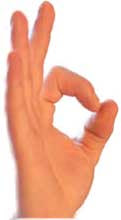
"Perfecto"
Aunque este signo significa "Perfecto", "Delicioso", en Estados Unidos y en muchos países, tiene otros significados:
• En Brasil y Alemania es un gesto obsceno ("Que te den").
• En Japón, "dinero".
• En Francia suele significar "cero", "inútil"
("A-OK" sign: Although this means "O.K.", "Delicious", in the U.S. and in many countries, it has other meanings:
• In Brazil and Germany, this gesture is obscene ("Up yours").
• In Japan, this means "money."
• In France, it has the additional meaning of "zero" or "worthless.")
La V de Victoria.
En Estados Unidos, Gran Bretaña y la mayoría de los países significa "victoria", o "paz" siempre asociado a Winston Churchill durante la Segunda Guerra Mundial.
Pero en el Reino Unido, Irlanda, Australia y Nueva Zelanda, si se realiza el gesto con la palma de la mano hacia dentro es uninsulto –sobre todo si se ejecuta un movimiento hacia arriba con los dedos, significa "¡Que te den!".
El origen que más se cita, aunque seguramente apócrifo, remonta a la Batalla de Agincourt (1415) entre Francia e Inglaterra. Los franceses amenazaron a los arqueros ingleses y galeses con cortarles los dedos con los que disparaban después de ganar la batalla. Por lo tanto, tras la derrota francesa, cuenta la historia que los ingleses se mofaban de sus prisionerosfranceses alzando las manos con los dos dedos levantados, la palma de la mano hacia dentro para mostrarles los dos dedos intactos.
("V" for Victory:In the United States, it means "victory" or "peace" associated with Winston Churchill during the Second World War.
But in the UK, Ireland, Australia and New Zealand, if the palm faces inward it is a taunt- especially if executed with an upward jerk of the fingers, it means "Shove it."
The most often quoted origin, almost certainly apocryphal, dates back to the Battle of Agincourt (1415) between England and France. The French claimed that they would cut off the arrow-shooting fingers of all the English and Welsh longbowmen after they had won the battle. So, after the French were defeated, the story claims that the English scoffed at their French prisoners by holding up their hands, first two fingers upright, palm inward, to show both fingers fully intact.)
Los cuernos
Los cuernos tienen diferentes significados:
Para los norteamericanos es el símbolo de la universidad de Austin en Tejas y significa "Hook'em Horns" ("clavadle los cuernos" refiriéndose a los toros típicos de Tejas).
Pero en algunas partes de África, es una maldición.
Y para millones de españoles e italianos, un insulto que significa que "Tu cónyuge te engaña".
Sin embargo para muchos fans de la música heavy significa "Todo bien, ¿qué tal?"
En Hawái, también, es un signo de paz que significa "Bienvenido", "Relájate" y ahora muy utilizado por surfistas,deportistas... hasta por el presidente Barack Obama (ya que es de origen hawaiano) durante el desfile inaugural.
(Hook'em Horns: For Americans it is a symbol for the fans of the University of Texas and means "Hook'em Horns".
But in parts of Africa, this is a curse. And for millions of Spaniards and Italians, it is a taunt which means that "Your spouse is being unfaithful."
However, for many fans of heavy metal music it means "Everything’s good - how are you?", "Rock on".
And in Hawaii also it is a sign of peace and welcome which means "Aloha", "hang loose" and now very much used by surfers, sportsmen,...even President Barack Obama (as he is from Hawaiian origin) during the inaugural parade.)
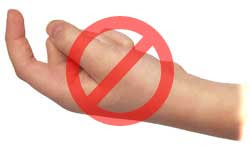
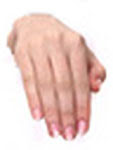
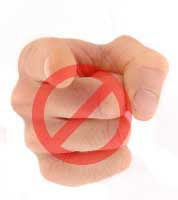
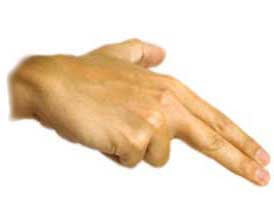
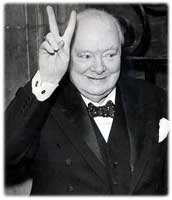


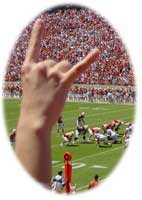
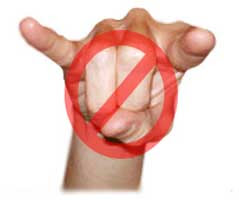


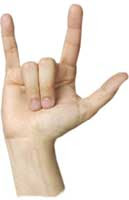
No hay comentarios:
Publicar un comentario